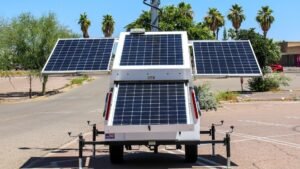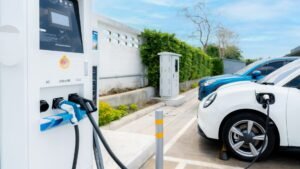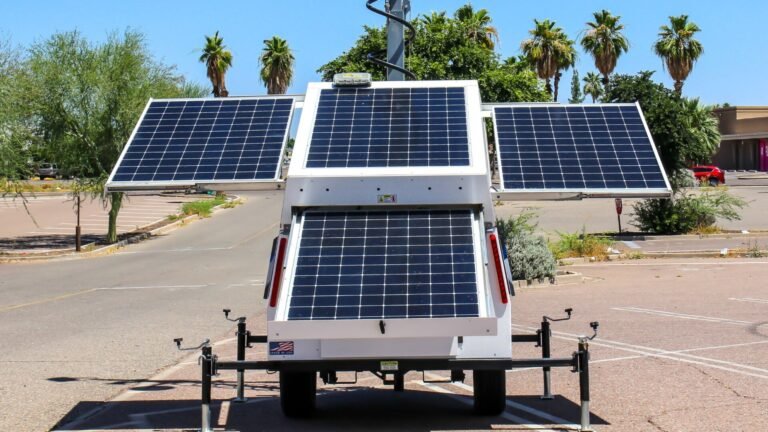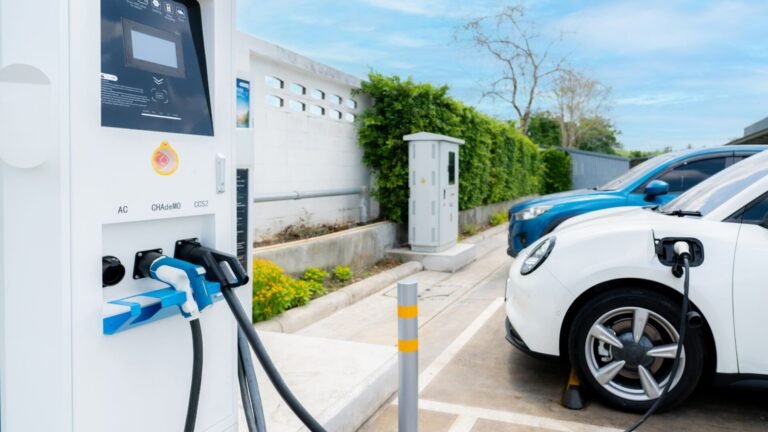In the quest for sustainable and efficient energy solutions, solar power stands at the forefront of renewable energy technologies.
However, maximizing the efficiency of solar panels has always been a challenge, given their static installations.
Enter the Internet of Things (IoT)-enabled solar tracking systems, a game-changing innovation designed to optimize solar energy capture by dynamically aligning solar panels with the sun’s position throughout the day.
This blog delves into the mechanics, benefits, and future prospects of IoT-enabled solar tracking systems, shedding light on how they represent a significant leap toward achieving optimal efficiency in solar energy utilization.
Understanding Solar Tracking Systems
Solar tracking systems adjust the orientation of solar panels in response to the sun’s movement across the sky.
Unlike fixed solar panels, which are stationary and often set at an angle estimated to capture the most sunlight year-round, tracking systems can tilt and rotate panels to face the sun directly throughout the day.
There are two main types of solar tracking systems: single-axis trackers, which move panels east to west, and dual-axis trackers, which additionally adjust the tilt of panels to capture the optimal amount of sunlight as the sun’s elevation changes.
The Role of IoT in Solar Tracking
The integration of IoT technology with solar tracking systems marks a revolutionary step in enhancing their efficiency and functionality.
IoT devices, equipped with sensors and network connectivity, collect real-time data on sunlight intensity, weather conditions, and the position of the sun.
This data is then processed through sophisticated algorithms to determine the optimal orientation for the solar panels at any given moment. Moreover, IoT connectivity enables remote monitoring and control of solar tracking systems.
Operators can access performance data, receive alerts for maintenance needs, and adjust system settings from anywhere, ensuring that the solar panels operate at peak efficiency without necessitating on-site intervention.
Advantages of IoT-Enabled Solar Tracking Systems
Increased Energy Production
By continuously aligning solar panels with the sun, IoT-enabled tracking systems can significantly boost energy production. Studies have shown that solar trackers can increase energy output by 20% to 40% compared to fixed panel installations, depending on the geographic location and type of tracker used.
Enhanced Efficiency
IoT technology enhances the efficiency of tracking systems by optimizing their operation based on comprehensive environmental data.
This not only maximizes energy capture during peak sunlight hours but also reduces wear and tear on mechanical components by avoiding unnecessary movements, thereby extending the lifespan of the system.
Predictive Maintenance
With IoT sensors monitoring the health and performance of solar tracking systems, operators can identify and address potential issues before they lead to system downtime.
Predictive maintenance helps in reducing repair costs and ensuring consistent energy production.
Scalability and Integration
IoT-enabled solar trackers are easily scalable and can be integrated with existing solar installations or other renewable energy systems.
This flexibility makes them an attractive option for both small-scale residential setups and large-scale commercial projects.
Challenges and Considerations
Despite their benefits, IoT-enabled solar tracking systems face certain challenges. The initial cost of these systems is higher than that of fixed panels, which may deter some potential adopters.
Additionally, the complexity of their design requires skilled installation and maintenance. However, the long-term increase in energy production often offsets these initial expenses.
Environmental factors, such as wind and snow, can also impact the durability and effectiveness of tracking systems. Therefore, designing robust systems that can withstand diverse weather conditions is crucial.
The Future of IoT-Enabled Solar Tracking
The future of IoT-enabled solar tracking systems looks bright, with ongoing advancements in technology expected to further enhance their efficiency and reduce costs.
The integration of artificial intelligence (AI) and machine learning (ML) with IoT technology could enable even more precise control of solar trackers, optimizing their performance based on predictive models of weather and sunlight patterns.
Moreover, as the global push for renewable energy intensifies, the demand for innovative solutions like IoT-enabled solar trackers is set to increase.
These systems not only contribute to the reduction of carbon emissions by making solar energy more accessible and efficient but also represent a significant step forward in the global transition to a sustainable energy future.
Conclusion
IoT-enabled solar tracking systems embody the intersection of renewable energy technology and digital innovation, offering a promising solution to enhance the efficiency of solar power generation.
By harnessing real-time data and automated adjustments, these systems optimize the orientation of solar panels, significantly increasing energy production.
Despite facing challenges such as higher initial costs and environmental durability concerns, the benefits of increased efficiency, predictive maintenance, and scalability make IoT-enabled solar trackers a vital component in the evolution of solar energy technology.
As we look towards a future powered by renewable energy, innovations like IoT-enabled solar tracking systems play a crucial role in making sustainable energy more viable and efficient, paving the way for a greener planet.






